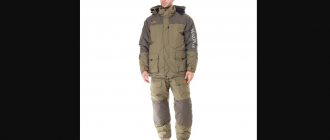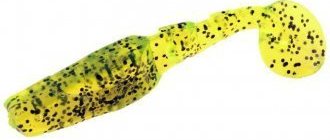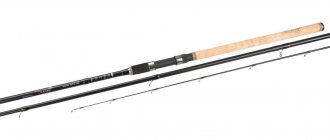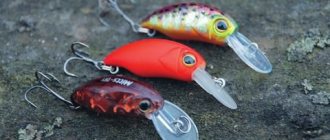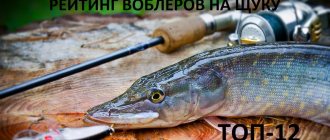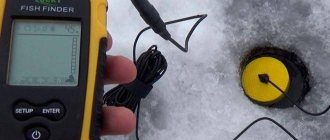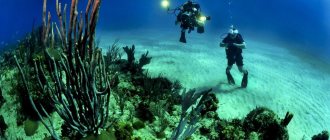Echolocation devices with side scanning capabilities are considered the latest step in the development of search equipment for fishing. In such devices, radar beams are directed not only straight down, but also diverge to the sides. They are capable of scanning underwater space to the left and right of the source for tens of meters. In order to obtain the most complete picture of the underwater situation, it is created by combining data obtained from the return of signals from the side with data from the return of a signal from below.
Features of operation and application of the side echo sounder
Side-scan sonars use the same technology as photographic sonars, however, with the difference that the scanning beams extend laterally. The side scanning function will be most useful when jigging (spinning fishing from a rubber boat) and trolling (motorized fishing), as well as for mapping the topography of the bottom of the reservoir. The range of modern side echo sounders can reach several tens of meters.
In order to learn how to read a side scan pattern, some skill will be required, however, with the successful mastery of this science, fishing will become much easier. Traditionally, the source-boat is conventionally displayed on the display at the top in the middle, and the bottom is displayed at an equidistant distance from the source boat in both directions, and the water column is displayed between the bottom and the boat. The beams of the side echo sounder diverge in a narrow beam in the form of a fan. Depending on the type of device, side scanning can be performed as a full-fledged part of the echolocation equipment or can be performed as a separate element that is attached to a standard echo sounder, thereby expanding its functions. Searching for schools of fish, shallow water areas and underwater objects over a large area is the main task for which a side echo sounder is used.
Differences from traditional models
The difference between the equipment under consideration and the classical equipment is that the projection of the beam of a standard apparatus along the bottom is a circle, the diameter of which will depend on the depth and angle of the beam. In a side scanner, the projection of rays is presented in the form of a narrow strip, so to carry out the scanning process it is necessary to move the beam source, i.e. boat with the device.
Double beam
Rivotek Fisher 20 Dual
pros
- price
- dual-beam sensor-transducer
- good image quality
- anti-glare screen coating
- temperature sensor
Minuses
- not very convenient and fragile plug mount
A budget device from Russia, one of the top echo sounders for summer and winter fishing, especially for shallow water. Portable dimensions and powered by 4 AAA batteries allow you to use it for fishing from a rubber boat, shore or other vessel.
Humminbird PiranhaMAX 4
pros
- sound signal
- convenient menu
- temperature sensor
- maximum depth about 200 m
- suitable for pvc boat
Minuses
- not identified
The portable echo sounder has earned positive reviews from fishermen. Classic Dual Beam technology scans underwater terrain and fish in one go. The model is included in the ranking of echo sounders for fishing from a boat 2021.
Side echo sounder sensor operation
Proper transducer installation is key to productive fishing with locating equipment. Its incorrect integration can lead to incorrect results, which can reduce the productivity of the entire process. In addition, the level of detail of the scanned bottom may also be reduced.
Installation locations
For correct operation of the equipment, the location of the display is not at all important; it is much more important to correctly place the structural scanning sensor. In total, there are several variations of installation, some of which can be considered somewhat more “correct” than others. At the same time, it will not make much difference whether the sensor is an integral element of the location device or whether it is attached separately.
IMPORTANT! The sensor must have full and clear visibility from both sides (left and right), i.e. the outgoing beams should not be interfered with by protruding hull parts or boat engine propellers.
Thus, the best places to mount the sensor are:
- Transom - in a vessel made of a solid and durable hull, a special hole is drilled for attaching the sensor, which is subsequently sealed;
- On the hinged transom (on one of its sides) - several interconnected holes are made in the aluminum plate, which will allow you to change the position of the sensor;
- Under the hinged transom - in this position there is enough space to produce high-quality echolocation;
- On a Trolling Motor - Some trolling motors come with factory-installed holes for mounting a locator transducer on.
IMPORTANT! If the sensor is attached directly to the transom, then it is preferable to mount it through a special clamp-holder for it. Such a device, as a rule, is not very expensive, but it will help the sensor avoid damage in a situation where an unplanned collision with an obstacle occurs or the boat runs aground.
High-quality electrical connection
The transmission of electrical impulses through wires in the location device system plays an important role. The electrical wiring must not have kinks or damage, and must be reliably insulated, which guarantees not only reliable power supply to the entire system, but also obtaining a clean (without “white” noise) image from the side scanner. Typically, all power leads are connected directly to the battery directly, and all terminal connections are properly soldered. Also, it is worth paying attention to the proper installation of the fuse (its integration must comply with the manufacturer’s recommendations).
DEEPER SMART SONAR PRO+ – wireless
The difference is wireless communication via Wi-Fi or Bluetooth with a smartphone or tablet equipped with Android or iOS.
The echo sounder allows you to scan areas of the bottom and search for fish while on the shore, in a boat, on a bridge or pier at a distance of up to 100 meters from the echo sounder. It has a waterproof, sealed and durable body and is lightweight.
Fixes the depth, shows the location of the hook with a nozzle or jig. Tells the fisherman the presence of fish. It is possible to record the current location in memory and draw a picture of the bottom.
Pros:
- Mobility, no cable connection to a power source, remote scanning.
- Small dimensions, lightweight, affordable price.
- Accurate distance fixation, catches even small fish.
Minuses:
- In the glare of the sun, without a cord, it is impossible to determine the location of the echo sounder.
- Risk of detachment during casting.
Features of the global positioning receiver
Previously, almost all “map drawers” (chartplotters) and echo sounders were equipped with an external GPS antenna. Modern trends towards minimizing any high-precision equipment have led to the fact that the antenna element is now hidden inside the device body. Thus, in order to correctly display the received information on the screen, the echo sounder will need the presence of an external GPS receiver, otherwise the scanned object will be displayed incorrectly according to its coordinates in the X-Y axes and the data will diverge from its actual location on the bottom.
IMPORTANT! It is possible to achieve the most accurate coordinates for the displayed object by placing an external GPS receiver as close as possible to the transducer. This provision will make it possible to provide the most accurate information regarding the distance between the source (boat) and the fixed object on the bottom. If you use only the internal GPS antenna of the device, then you will need to make some allowance for the displayed distance, lengthening it slightly. The use of this method is only possible with the help of numerous verification measurements, i.e. you will have to go through the difficult path of trial and error.
StructureScan vs Standard Sonar
There are two main scanning modes for working with your fish finder: Standard Sonar and StructureScan . Users often ask which one is better or which sensor to install. In simple terms, we recommend using both modes, since there are situations in which both types of information are required at some point. First of all, it is worth starting the 83/200 mode to obtain a standard echo sounder image. In general, it is better to set the frequency to 200 kHz with automatic sensitivity or a little higher/lower depending on water clarity, etc. This search tool can be used at fairly high speeds in split-screen mode with mapping. This allows you to view the depths ahead, build a route and at the same time look for schools of fish, and view changes in the relief.
Once you find an area of interest, you need to slow down to allow the sensor to scan the area more thoroughly to see what's nearby. When the fish is nearby, you can use standard sonar to understand the behavior of the fish and its size. The denser the yellow color in the center of the fish, the larger the fish usually is, if you have one, two or three arcs actively moving in the range of 1-2 meters, then the screen arcs will be more rounded. If there are more arcs, and they are very flat and grouped tightly, it is fair to assume that they are inactive at the moment.
Once you find an area of interest, you need to slow down to allow the sensor to scan the area more thoroughly to see what's nearby. When the fish is nearby, you can use standard sonar to understand the behavior of the fish and its size. The denser the yellow color in the center of the fish, the larger the fish usually is, if you have one, two or three arcs actively moving in the range of 1-2 meters, then the screen arcs will be more rounded. If there are more arcs, and they are very flat and grouped tightly, it is fair to assume that they are inactive at the moment.
For example, screened bass and catfish differ significantly in color spectrum and intensity on standard sonar. The catfish sits very tightly to the bottom, as if it is almost glued to it, the lines are thin and the telltale signal is that they will be excited by the transducer pulse and rise under the boat. This allows you to quickly identify the type of fish so as not to waste precious time.
When you find a large school of fish that you want to get a better look at, you can split the screen between the sonar and StructureScan and then continue walking around. Using StructureScan you can determine how densely the fish are located in relation to the structure of the bottom. The bottom image shows how clearly the structural elements on the bottom can be identified.
One of the key applications of StructureScan is determining the size of fish. Since the structure sensor shows the exact sizes of objects in the water and separates them with separate symbols, you can immediately see where the big fish are and where the small ones are, even when they are close to each other. In most cases the larger fish will either be sitting above or below the smaller ones and by scanning the structure it is possible to determine the depth of the larger ones and select bait to increase the chances of catching the best catch.
Features of hardware settings of side echo sounders
Professional fishermen in the field of high-tech fishing do not recommend changing the factory settings of the side echo sounder, but rather use the default settings. For example, this concerns setting the contrast and sensitivity of the display - in general, these options should be changed only after the operator learns to clearly recognize the resulting picture. To improve your skills, it is recommended to practice swimming near easily interpretable objects, such as:
- Bridge supports;
- Large stones that have both underwater and surface parts;
- Branched snags of trees with a clearly recognizable silhouette.
Such objects will be very easy to identify from the side.
IMPORTANT! For the purpose of obtaining the best scanning results, it should be run at a speed of 9 to 18 kilometers per hour. At the same time, it is recommended to set the initial scanning range to 40 meters - this will allow you to obtain a detailed image at the first stage.
After the operator learns to read the resulting image more or less correctly, it is possible to move on to reconfiguring the standard settings. Here are some adjustment elements and their purpose:
- Contrast/sensitivity - with their help, image processing is adjusted in the brightness ratio between dark and light tones, which is reflected on the echo sounder display. Using this setting, you can reduce the “white noise” in order to better distinguish between background (bottom topography) and moving objects (schools of fish);
- Range – this setting is responsible for the distance over which scanning occurs in each direction. Typically, the device display has many pixels, therefore, when setting a wider range, the device will be forced to greatly compress the graphic output data, which will make it difficult to read. From here it is clear that the narrower the range, the more detailed the picture is displayed;
- Turning on a specific side - it is possible to set the scanning mode to only the left or only the starboard side;
- Color palette - the received data will be displayed by the device using a certain color strength of the object, which will depend on the distance to it.
How to choose a fish finder
The modern market for fishing accessories offers a large range of sonars; the range includes wired and portable models of echo sounders for coastal and winter fishing, as well as for fishing from a boat. To select the most effective device, you should focus on the technical parameters that have a key impact on the operational properties of the echo sounder. Secondary selection criteria affect the ease of use of the device.
Important parameters
- Transmitter power - this indicator directly affects the quality of the received signal. The higher the power, the clearer the picture of the underwater world will be.
- Transducer frequency – the depth and width of the scanned area depend on the parameter. When choosing a frequency, you should consider your fishing method. A high indicator will provide a detailed image at a minimum depth, while a low-frequency transducer will allow you to scan the bottom at greater depths, but the image quality will not be as clear.
- Sensitivity is a characteristic that affects the ability of the receiver to catch waves; the indicator is directly related to the power of the device. An insensitive device will not be able to pick up powerful signals; an overly sensitive one will create interference on the screen. Therefore, it is better to choose an echo sounder with the ability to adjust sensitivity.
- Number of beams - budget models, as a rule, are equipped with one beam, while expensive echo sounders have from 4 to 5 beams of different frequencies. The greater the number of rays, the more extensive and complete the bottom image on the display.
- Features of the display – a well-chosen screen will allow you to view the received data in detail. Color and monochrome screens can be used in echo sounder designs. Color displays must have an anti-reflective coating; the number of gray shades in monochrome models should not be less than 4.
Minor Criteria
- maximum depth of echolocation;
- presence of a temperature sensor;
- method of mounting the transducer;
- additional features;
- device design.
Technical characteristics and features of the top 7 best echo sounder models are presented in the review.
Reading an echogram recording
For a better understanding of the data produced by the side echo sounder, it is preferable to use the echogram recording function. An echogram is a compilation of all data collected by the sonar into one file, which can subsequently be reproduced on various computing devices (depending on the saving format and the availability of special viewing and editing programs). By working with this file, it is possible to experiment with the settings and learn how they can affect the image obtained during real work.
Echogram settings
The main variables of the echogram include:
- Sensitivity – at high values of this parameter, the image takes on a “blurred” appearance. If, on the contrary, the indicator is too low, then some small details may not be displayed. Professionals advise leaving this parameter at a medium level, both when reading an echogram and while working in real time. As a last resort, for the purity of the data obtained, two copies with different sensitivity settings should be compared simultaneously;
- Contrast – this parameter regulates the overall illumination of the picture, i.e., the so-called “white level”. High contrast enhances the colors produced, while low contrast results in blurred colors;
- Echogram speed – using high speed when the source of the signal (boat) is moving slowly will result in a smeared and blurry picture. In turn, a reduced scrolling speed with accelerated movement of the source will lead to the fact that the device will not have time to display the received data (the update will be uneven). This shows that it is preferable to use average values of this parameter.
New generation of echo sounders - HDS - Part 3
New generation of echo sounders - HDS - part 3
(Continued. Part 1, Part 2 )
13. Sleep mode. Multifunctional chartplotters have such a feature - they take a rather long time to load when turned on. HDS is no exception. Miracles don’t happen; the more settings and all kinds of pages, the more time it takes to get it all up and running. But constantly switched on electronics drain the battery quite significantly, unless, of course, recharging from the engine works. And in general, having a monitor constantly turned on unnecessarily is somewhat annoying when fishing, especially at night. To do this, they introduced the so-called sleep mode, exactly like on a computer, which activates and turns off the screen with two button presses, in two seconds. In order not to forget that it still works and not to leave the HDS working for a long time, thereby draining the battery, the device reminds itself of itself with the inscription “Passive” on the screen every 10 seconds. 14. Ability to display weather maps in real time.
Shows storm progress, precipitation and lightning
Of course, so far only in the United States, but I believe that such a service will also reach us someday. After all, not so long ago, the already familiar GPS system (global positioning system) was the property of only the Pentagon, and only the most desperate optimists could imagine that we would use it freely. To activate this option, you will need a weather receiver antenna. The antenna also receives 120 channels of satellite, digital radio. 15. Compatible with high-resolution Broadband radar. But this is already reality. Lawrence's third revolutionary invention in recent times is high-resolution radar. Designed for work in confined spaces, mainly for short distances, particularly on a river or in a cramped harbour. Classic radars have a problem with near-field vision. That is, they look beyond the horizon, bless you, but under your feet (1 km or less) they see poorly. We conducted natural tests in our conditions. The results were shocking. Unprecedented detail and separation of objects. It is able to identify the most insignificant objects. Even a duck on the water, whose head height above the surface is 10 cm - fantastic!!! That is, we can talk seriously about safety from a collision, for example, with a log. He can see even 3-4 meters away from himself. Plus, this is the world's first safe radar. Any other radars produce hundreds of times stronger radiation that is harmful to health, and it is not recommended to enter the 25-degree horizontal sector of a classic radar. At the same time, the Broadband radar emits tens of times less than a regular mobile phone. Watch our video. This miracle can only work on HDS and some other chartplotter models from NAVICO.
You can see the difference in the diagram. On the left are screenshots of Broadband, on the right is a traditional but HD radar. Comparative diagram from top to bottom. 1. Boat anchored near the shore 2. Radar location. 3. Pedestrian bridge. The lower comparison diagram shows the difference in the image of a cluster of moored boats. I note that the comparison is made not just with a conventional radar, but with the recent new HD (High Definition) radar. As you understand, the difference in the image with older radars (2-3 years ago) is much more noticeable. 16. Preset echo sounder setup modes. Lawrence has come up with another trick to make life easier for mere mortals. So that a person does not have to worry about setting up the echo sounder, in the menu you can choose from 8 types of settings one that is suitable for your case. For example: salt water, fresh water, deep sea trolling, shallow water trolling, fast trolling, standard, etc. It is assumed that in each case the settings that Lawrence experts consider optimal for this type of use are applied. To be honest, I didn't like most of the options offered. Either due to established habits, or I don’t understand the peculiarities of American fishing, or simply the function already exists, but has not yet been finalized. But overall the idea is very positive. 17. Compatible with Structure Scanner. Finally, the most important thing. A miracle called StructureScan works only with the Lowrance HDS line.
A structure scanner (LSS) is an additional device in the form of a blackbox with an additional transducer (sensor-emitter) connected to it. The Blackbox is connected by cable to the HDS head. Two transducers can operate simultaneously, complementing each other. The structure scanner, in turn, consists of a side scanner, whose task is to scan the bottom along the sides of the boat like a flashlight (up to 145 meters in both directions) and a bottom scanner, whose task is to scan the bottom under the boat.
The image quality of underwater objects is simply amazing.
Side and bottom scanner - car. I can’t resist commenting - if you zoom in on the wheel, you can perhaps look at the design of the rims. I was lucky enough to be the first in Ukraine to experience this miracle. My conclusion is that other echo sounders are simply depth gauges. This thing looks like it's about to change everything we think about echolocation. You can read more in the article “New generation echo sounder”. Watch a video about LSS. 18. Many color displays of the echo sounder picture. Previously, we thought that these were just empty “bells and whistles” and included one of the most beautiful color modes, most often “color wire”. But now it is possible to combine the image of a classic echo sounder and a lower scanner, and the ability to choose the appropriate colors turned out to be very useful.
Overlaying the structure scanner image onto the echo sounder. Gray structure scanner, red-yellow echo sounder
Overlaying the structure scanner image onto the echo sounder. Gray structure scanner, red-yellow echo sounder. Perhaps, with some skill, you can even determine the trajectory of a school of fish. Since a structure scanner will accurately show a solid object (including fish), while a conventional echo sounder at the same time displays all sorts of vortex flows that fish or currents can create. Thus, while only theoretically, in such a combined picture you can see the direction of the shelf behind the fish, like behind a comet. That is, it will be possible to say that the school is moving upstream, rolling down, or standing still. We will soon try to answer this precisely by conducting natural experiments involving underwater hunters. 19. Optimal model range. There are four models in the HDS range, each of which has its own advantages. I only considered combined models, GPS and echo sounder. Although there are models in the same housing with only echo sounders or only GPS. But the difference in cost with multifunctional devices is insignificant, and even if you can’t afford to buy a branded card for it now, then in the future such an opportunity may arise or there may be an urgent need for a card and the function will be in demand. I had the opportunity to test 5, 7, 8 inch models in natural conditions (on fishing trips), and quite thoroughly. I will describe the pleasant features. It is worth noting right away that the cost depends 80% on the size of the screen, and not on the functionality of the filling. HDS-5 The size of the standard and familiar 5-inch LCX, LMS, X and GlobalMap®. But for the same money as comparable older models, you have all the bells and whistles listed above. The disadvantage is that it is unbearably small for displaying the Structural Scanner. But it will show. If you split the screen into two windows, the pictures will look like matchboxes. HDS-7 Same as HDS-5, only the screen is stretched across the width. This to some extent saves the picture of the Structure Scanner. But there is still some inconvenience in working with it and HDS5. For example, if you put a point in the scanner window, then to find it on the GPS map, you need to go to the menu, turn on the map, look for the point, and only then you can go to it. Then you need to go to the menu again and turn on the scanner window. In general, the hassle is not for white people. I really would like to see both scanner structures (side and bottom) and the map on the screen at the same time, but on 5 and 7 this is not allowed because when divided, the windows will be indecently small. Plus, the Structure Scanner plaintively asks for a larger screen, since the larger the screen, the better small objects are displayed. A motor boat is possible with
Features of using the range function
This function is responsible for the range at which the information received from the sonar will be displayed on the screen. The wider the range, the more data can fit on the display. However, with a decrease in range it is possible to achieve increased picture detail. To use this function correctly, you should take into account the type of object being scanned with priority (stationary terrain or a moving school of fish).
IMPORTANT! When scanning protrusions and shafts, it is necessary to narrow the range, creating a more comfortable imaging environment. Thus, when viewing a specific area, space on the display will not be lost. To search for schools of fish, it is advisable to set a range of 15–30 meters for each side, which will make it easier to recognize fish and increase its contrast with bottom objects.
Frequency used: 800 and 455 kilohertz
Most side echo sounders operate at a frequency of 800 kHz. However, an increase in the frequency indicator does not at all mean the operation of the device required by the operator. There are models that operate at a frequency of 455 kHz. The first models are able to provide the clearest images, while the second can provide the largest coverage area with their signal. From this it can be seen that the differences between the frequencies used are as follows:
- 455 kHz – great for most activities, such as scanning large areas for various bottom weeds and isolated fish hiding places;
- 800 kHz - perfect for repeated trips to already explored areas in order to obtain a more accurate understanding of the situation in them. In addition, at a frequency of 800 kHz it is even possible to identify individual fish species that were not accurately recorded in the primary echogram.
What is a structural echo sounder
A structural echo sounder is a fish-finding device with a complex beam shaping system. A special built-in program processes the scanner signal and transmits to the screen not just the outlines of the bottom and near-bottom areas, but detailed information about the topography and structure of the bottom, the presence of snags and algae. Detects fish even in hard-to-reach places, identifies it, and determines its depth. Typically, a structural echo sounder is equipped with a large screen with a separation function for image modes. The sensor operates at a specific frequency, or it is possible to select a scanning mode at different frequencies. Many models have a built-in GPS module, which makes it possible to create your own custom maps and determine exact coordinates.
Possible problems
Poor image quality
The most common complaint from fish finder operators is about this quality. As a rule, the whole essence of the problem lies in the correct adjustment of the color gamut, sensitivity and contrast. To find that golden mean, it is advisable to practice on echogram recordings that need to be edited on stationary devices, remembering the best settings options. You should always remember that the smoothness of the transitions of bottom density, display of stone and gravel will depend on the image settings - all this will look different with different color palette options. Therefore, the image quality needs to be adjusted to the priority structure being scanned.
Device slows down in multi-window mode
Full-screen visualization allows you to display the largest number of scanned objects. However, multi-window mode can display previously recorded images of scanned areas, which allows you to compare them with those displayed in real time. However, the multi-window mode will significantly slow down the operation of the entire device, which is not surprising, because there is an increased load on the processor and memory.
Instead of an epilogue
When using side scanning, there are 3 main points to remember:
- Always check that the equipment is configured and installed correctly - to do this, you need to carefully examine the boat’s hull, establish places where sensor integration is possible and where the passage of the beams will not be interfered with by foreign objects. Also, you should pay attention to the correct installation of electrical wiring;
- Scan the structure and large objects first - this will make it easier to distinguish objects on the display;
- Create echogram recordings more often - when a structure or school of fish of interest is detected, several recordings should be made at different frequencies (both 455 and 800 kHz). This will allow you to most accurately reproduce the data and experiment with the settings.
Regarding the analysis of the market for the devices in question, it can be noted that it is the side echo sounders that are presented only by foreign manufacturers. Russian variations simply do not have the proper technology. Professionals recommend purchasing goods for this purpose through official online stores to save on incidental costs.
How to choose a structural echo sounder
When choosing a structural echo sounder, you need to pay attention to the screen size. Colored or monochrome – the fisherman’s choice. Since detailed information about the features of the body of water is transmitted, a split screen function is necessary. Enlarging the image and saving the history will also be helpful.
The peculiarity of the structural scanner is that it provides a detailed study of the bottom and near-bottom areas. The signal is automatically processed. The image is transmitted to a high resolution screen. Some devices support Ethernet and allow you to transfer information to other devices.

